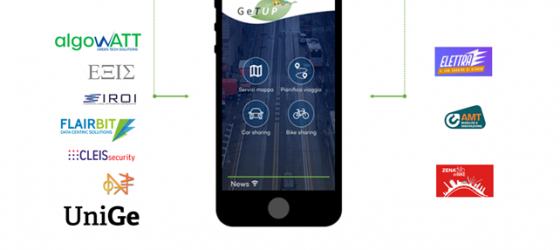Everyday we get in touch -and eventually we use- several services in an automatic and quite unaware way. Subscriptions and service contracts allow us to turn up the lights of our homes, to drink water from our tap, to listen to our playlists while going to work o to choose our movies at nights.
During the last decade, a large debate becoming wider and spreading out the close circles of experts and professionals, concerned the possibility to extend a similar approach to urban mobility and transport services, as well.
This is what we talk about speaking of Mobility-as-a-Services (MaaS).
The idea is to provide a digital platform, a smartphone application typically, to plan your trip from point A to point B within the city, to choose transport solutions that are more suitable to your needs for each segment of the trip and to by a single ticket for the whole journey.
Similar solutions enable users to save time for travel planning, using a single interface integrating every urban mobility service, from public transport, to sharing mobility components, to taxi cabs, thus allowing customers to define and buy their own ticket in a user-friendly and seamless way, benefitting from travel tickets’ discounts and tailoring their own solutions according to personal needs and preferences.
Similar solutions provide several benefits for mobility-providers, too. Since they can take advantage from new-born economies of scale, from an increased and enhanced visibility for their travel products thanks to their presence on the digital platform.
MaaS solutions are then supported and invoked by many municipalities as a way to enhance modal shift from individual vehicles towards more sustainable, collective and shared urban mobility alternatives, and to improve urban and metropolitan accessibility, as well, especially for those affected by age, ability or territorial impairments, thus hampering their right to move freely and autonomously.
Technology cannot develop independently form a substantial change is users’ mindset and a deep re-thinking of urban transport infrastructures’ system, that need to be shaped around multi-modal transport supply to make it easier and more comfortable for users.
Several cities have already taken this path, ranging from Australia to Finland, and nowadays Genoa, too, is implementing its own MaaS solution.
Within the framework of the Regional Operational Program 2014-2020, research project GetUp- Green MaaS for adapTive Urban Planning targets the development of a MaaS digital platform for Genoa (currently a beta version is available for a small tester group). This project involves an ecosystem of local enterprises and companies led by Genoese Public Transport mobility provider AMT, with scientific support of Civil, Chemical and Environmental Engineering Department (DICCA prof. Ilaria Delponte) and Economy Department (DIEC, Porof. Enrico Musso and Claudia Burlando) from the University of Genoa.
Main goal is to favour local mobility services’ integration on a physical and spatial level, thus supporting an easy and comfortable multi-modality, as well as on the managing and fare side, thus supporting the development and adoption of shared standards for ticketing systems and data transferability.
First step is to develop this kind of MaaS solution for Genoese urban context to be later implemented for the whole metropolitan area, to pursue upscaling processes able to provide increased accessibility both to urban residents and to city users coming from coastal or inner areas to Genoa for work or leisure.
Present work, thanks to the collaboration among transport and technology companies, and to the support of the University of Genoa, could strongly enhance local mobility system transition towards a smarter, more inclusive and sustainable model, coherently with impact and emissions reduction targets set by EU and national authorities.

